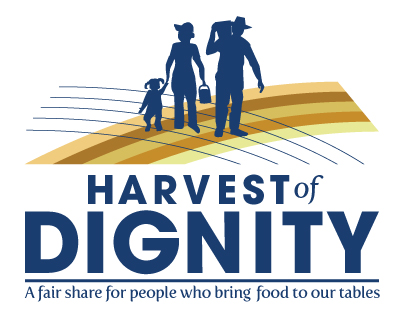Children in the Fields: The facts about child labor in North Carolina
Read a recent Op-Ed | Download the fact sheet
North Carolina child labor law permits children as young as 12 years old and in some cases as young as 10 to labor in the fields, while in every other industry the minimum age is 14 or above. Agriculture is one of the three most dangerous industries in the nation, and yet every year across the country close to 500,000 farmworker children and youth risk their childhood, health, and well-being in order to bring food to our tables. Children in North Carolina are no exception.
Field investigations in North Carolina have uncovered children as young as six working in the fields. Most Americans still envision farms as safe, nurturing places. Unfortunately, the safe, happy and healthy farm life that many of us imagine is just a myth for farmworker children in North Carolina.
Quick Facts
Children account for roughly 1 out of every 5 work-related deaths on farms, and face higher injury and illness rates than adult workers.
- At least 9 children have died working on farms in NC in the past decade, and many more have been injured. Children who work in fields treated with pesticides are at greater risk of developing neurological and reproductive health problems, as well as cancer.
Children are more vulnerable than adults to repetitive stress injury.
- Farmworker children are often bent over in the fields 8 to 12 hours a day, increasing their risk of developing musculoskeletal disorders. Since children are still developing physically, their exertion often places a greater stress on their bodies, with serious long-term consequences.
Farmworker children live in poverty.
- Farmworker children have limited access to health care, live in substandard housing and face food insecurity; all of which limit their ability to cope with the hazards they face and injuries they may suffer working in the fields.
Laboring in the fields negatively affects farmworker children’s school performance.
- The fatigue, injury and illness that come with working in the fields negatively affect development and school performance. Instead of participating in sports and other enrichment activities, child farmworkers face high dropout rates and an uncertain future.
Health and Access to Care
Many pesticides have a more significant effect on children than adults, because their bodies are still growing and developing. Children's exposure to pesticides in the field has been associated with an increased risk of developing cancer, nervous system disorders and infertility or sterility during their lifetimes.
The physical wear and tear from heavy lifting and bending several hundred times a day in the field affects the growth of a child's developing body, often causing muscle and joint problems that endure for the rest of the child's life.
Despite farmworker children’s increased risk of injury on the job, they often lack transportation to and information about health care facilities.
The Solution
While the tradition of working on the family farm can be easily preserved through a specific exemption, our child labor laws should be updated so that children working in agriculture are subject to the same laws and protections as all other industries in our state.
Recommendations
- End discriminatory child labor law by making the laws protecting young agricultural workers the same as in all other industries.
- Increase the minimum age at which a youth can perform hazardous work from 16 to 18 years old.
Child labor laws were written in the early 20th century, and reflect a time when farming was very different. These laws must be updated to reflect the realities and dangers of the current agricultural industry.
Growing up working on the family farm is an important tradition that should be preserved, but employing young children in hazardous work should not be a tradition any longer.
Child labor laws should be the same for every industry. Let's work together to protect North Carolina children from preventable injuries and death and ensure them a safe, healthy and bright future.
Sources
- Adekoya, N. and Pratt, S.D. 2001. “Fatal Unintentional Farm Injuries among Persons Less than 20 Years of Age in the United States: Geographic Profiles.” US Centers for Disease Control, National Institute of Occupational Safety & Health.
- National Institute of Occupational Safety and Health (NIOSH), 2010. Agricultural Safety. Available at: http://www.cdc.gov/niosh/topics/aginjury/.
- NIOSH bases this statement on the fatality rate of workers between 1992 and 2000. NIOSH, “NIOSH Alert: Preventing
- Deaths, Injuries and Illnesses of Young Workers,” no. 2003-128, July 2003, p. 4.
- Bureau of Labor Statistics, US Department of Labor, “Fatal occupational injuries, total hours worked, and rates of fatal
- occupational injuries by selected worker characteristics, occupations, and industries, civilian workers, 2008.”
- http://www.bls.gov/iif/oshwc/cfoi/cfoi_rates_2008hb.pdf The fatality rate for all civilian workers in 2008 was 3.7; for “crop production” it was 32.5.
- Perry, M.J. 2003. “Children’s Agricultural Health: Traumatic Injuries and Hazardous Inorganic Exposures.” MHS.
- Pryor et al. 2005. “Occupational Risky Business: Injury prevention behaviors of farm women and children.” Issues in Comprehensive Pediatric Nursing 28: 1.
- [Pediatric Fall Injuries in Agricultural Settings (2007) Pickett, Dostaler et al.],
- Lewandowski, B. and Szymanska, J. 2008. Agriculture-related severe craniofacial injuries in rural children and adolescents. Ann Agric Environ Med 2008, 15, 59–62.
- “Children’s Agricultural Health: Traumatic Injuries and Hazardous Inorganic Exposures” Melissa J. Perry, ScD, MHS 2003
- Hipke 1993. “Green tobacco sickness.” Southern Medical Journal 86: 989-92.
- McKnight and Spiller. 2005. “Green tobacco sickness and children and adolescents.” Public Health Reports, 120:602-605.
- [U.S. Environmental Protection Agency and Occupational Safety and Health Administration, A Guide to Heat Stress in Agriculture (Washington: EPA, 1994), p.1.]
- Whalley, Lara E., Grzywacz, Joseph G., Quandt, Sara A., Vallejos, Quirina M., Walkup, Michael, Chen, Haiying, Galván, Leonardo and Arcury, Thomas A.(2009)'Migrant Farmworker Field and Camp Safety and Sanitation in Eastern North Carolina',Journal of Agromedicine,14:4,421 — 436
- Weathers, A.. et al, 2004;
- [“Life on the Farm- Children at Risk” – Little, Vermillon, Dikis, Little, Custer and Cooney 2003
- [Child Labor - Still with us.(1997) Landrigan and McCammon.]
- National Agricultural Workers Survey, US Dept. of Labor, 2005
- Ward, L. East Coast Analysis of NAWS, 1998
- Household food security among migrant and seasonal Latino farmworkers in North Carolina. Quandt SA, Arcury TA, Early J, Tapia J, Davis JD. Public Health Rep. 2004 Nov-Dec; 119 (6):568-76.









